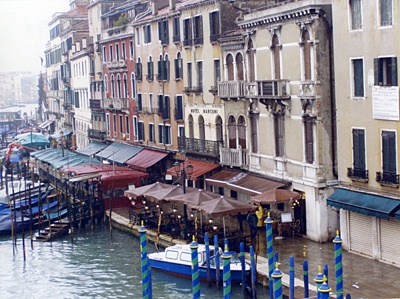All Nonfiction
- Bullying
- Books
- Academic
- Author Interviews
- Celebrity interviews
- College Articles
- College Essays
- Educator of the Year
- Heroes
- Interviews
- Memoir
- Personal Experience
- Sports
- Travel & Culture
All Opinions
- Bullying
- Current Events / Politics
- Discrimination
- Drugs / Alcohol / Smoking
- Entertainment / Celebrities
- Environment
- Love / Relationships
- Movies / Music / TV
- Pop Culture / Trends
- School / College
- Social Issues / Civics
- Spirituality / Religion
- Sports / Hobbies
All Hot Topics
- Bullying
- Community Service
- Environment
- Health
- Letters to the Editor
- Pride & Prejudice
- What Matters
- Back
Summer Guide
- Program Links
- Program Reviews
- Back
College Guide
- College Links
- College Reviews
- College Essays
- College Articles
- Back
From Venice to NYC
Flying back to the States after a two week escapade in northern Italy, I’m really surprised at myself. No, not because I’m listening to some “rad ‘80s music” coming from one of the plane’s radio stations, or because I just saved myself from a 2000 ft. altitude drop by remembering to buckle up for once. I’m not afraid. I’m landing on a gargantuan pit of fire, fueled by SATs next week, AP Tests immediately after that, SAT 2s in early June, and the usual workload of homework and extracurriculars. No big deal.
Soon I’ll be riding home on quicksand, honking by and trying to push past 60 mph, sneaking through any available crevice—so very different from the tranquil waters of Venice, where gondolas can’t go faster than 5 km/hr. Geographically speaking, New York City and Venice are not very different from each other. They are both islands, and can only be reached through either bridges or tunnels. Besides also hosting vast amounts of tourists per year, the comparison does not go much further.
Perhaps there is a simple, clear-cut reason explaining the huge divide between the Venetian lifestyle and the urban-American lifestyle. Like NYC, Venice has a productive economy, but it is also imbued in a sense of history spanning 2000 years. Napoleon Bonaparte’s former summer house is a short ten minute boat ride from the train station. On the other hand, NYC is a relatively young cosmopolitan city immersed in the innovations of the late 20th and early 21st century. While Venice creates with a constant sideways glance at the past, NYC usually becomes obsessed with the latest trends, as if they were the first in recorded human history.
My plane has just landed on Jersey soil and I feel totally at ease. The SATs, the AP exams, unweighted GPAs, and all other forms of competitive evaluation should be taken with a grain of salt. Human ambition and ideals have driven advances in civilization since the Neolithic Revolution. After our deaths, other humans will continue our endless quest for success, whether it is academic, athletic, or artistic. There is no rush to get anywhere.

Similar Articles
JOIN THE DISCUSSION
This article has 0 comments.
